It took several years, but eventually, Boragó drew the attention of the International Dining Mafia: it now ranks No. 37 on the "World's 50 Best Restaurants" list, and No. 4 among "Latin America's 50 Best Restaurants" – whatever the heck those rankings mean. I think the whole concept of these numerical rankings is goofy, before even addressing the many other valid criticisms lodged against the "50 Best" list. But it can still be a useful tool for finding restaurants, particularly in regions that don't get as much critical attention otherwise.
One of those criticisms is that the restaurants on the list tend to have a certain sameness to them: high-end, expensive tasting menus, chasing the same fashionable ingredient trends, plated according to the same aesthetic. On the surface, Boragó might seem to fall into that camp: another pricey, tasting-menu place. But from its inception, Boragó set out to explore the largely unheralded ingredients and cooking methods of Chile's native peoples, and it dives deep. When you order the "Endemíca" tasting menu at Boragó, you are given not a menu, but a map: literally, a map of Chile, stretching along the Pacific coast of South America from the northern desert of Atacama to the Tierra del Fuego in the south, the last stop before Antarctica.
My recap here reconstructs what I have gathered about our meal from the contemporaneous descriptions as they were presented (which came at us in a mix of English and sometimes rapid-fire Spanish, depending on who brought the dish to the table), Instagram posts from Chef Guzman, and some independent research after the fact.
(You can see all my pictures in this Boragó - Santiago, Chile flickr set).
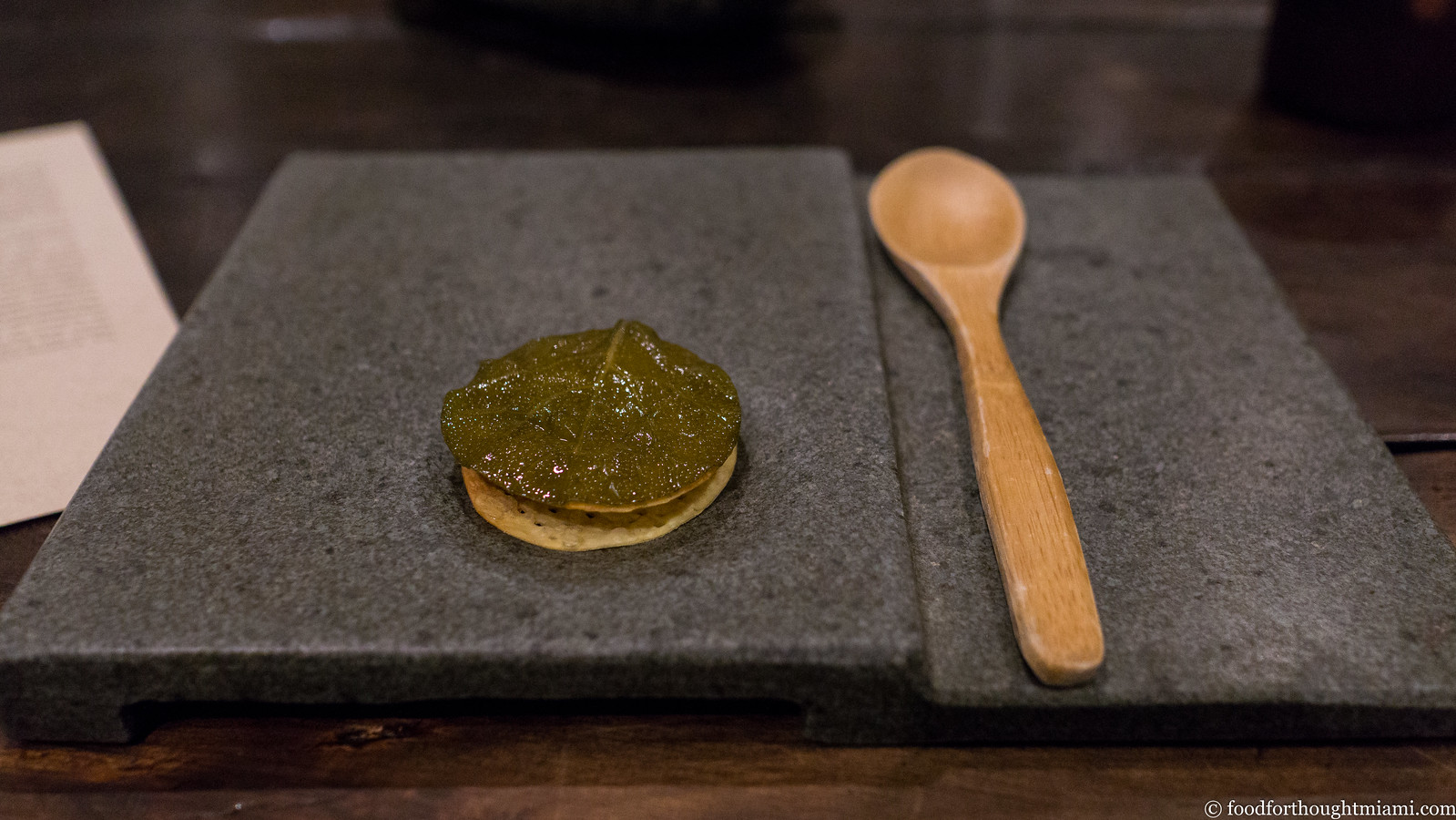 |
| chilenito |
 |
| chuchum |
 |
| chupe de hongos de Quintay |
(continued ...)
 |
| jibia, pebre de erizos y marraqueta |
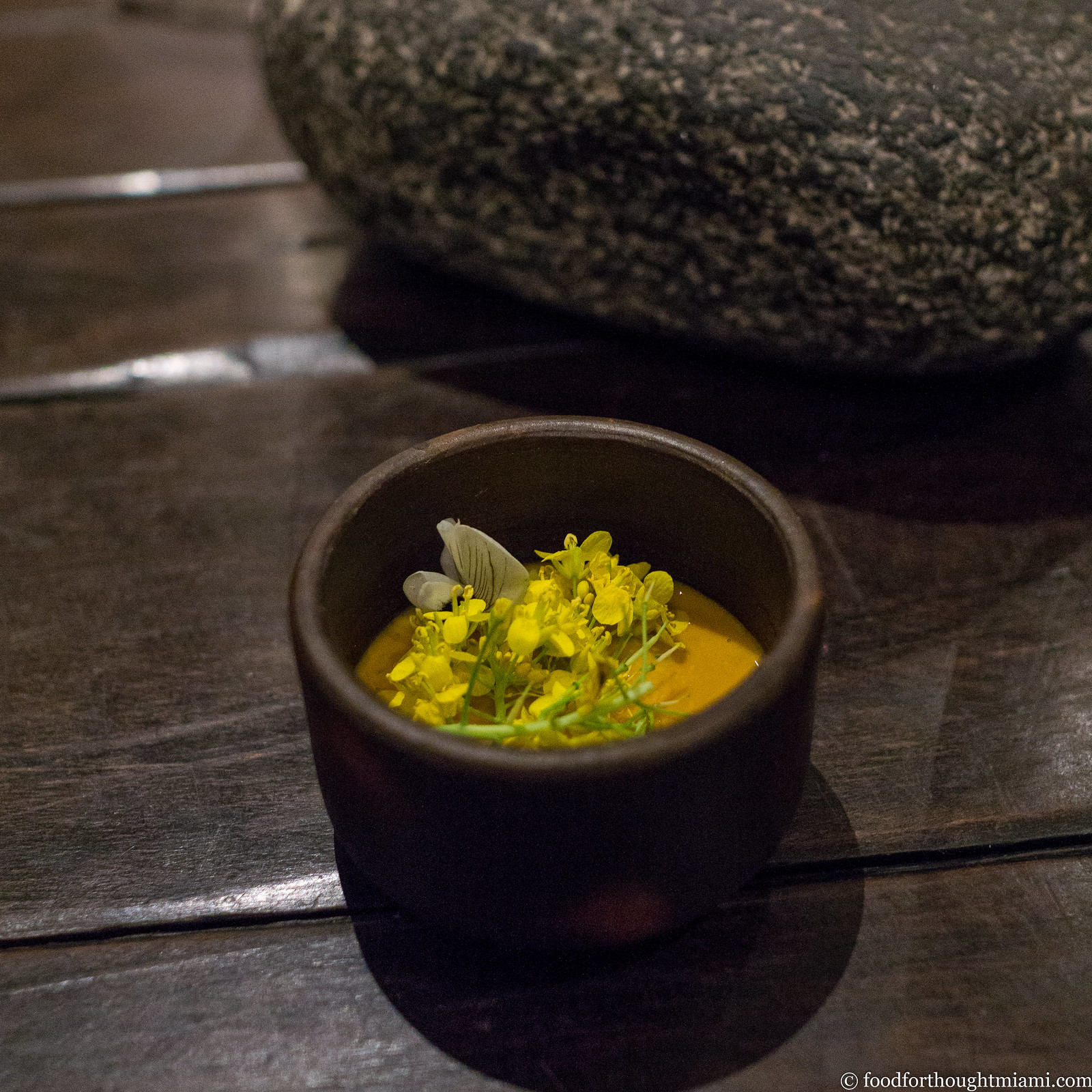 |
| pebre de erizos |
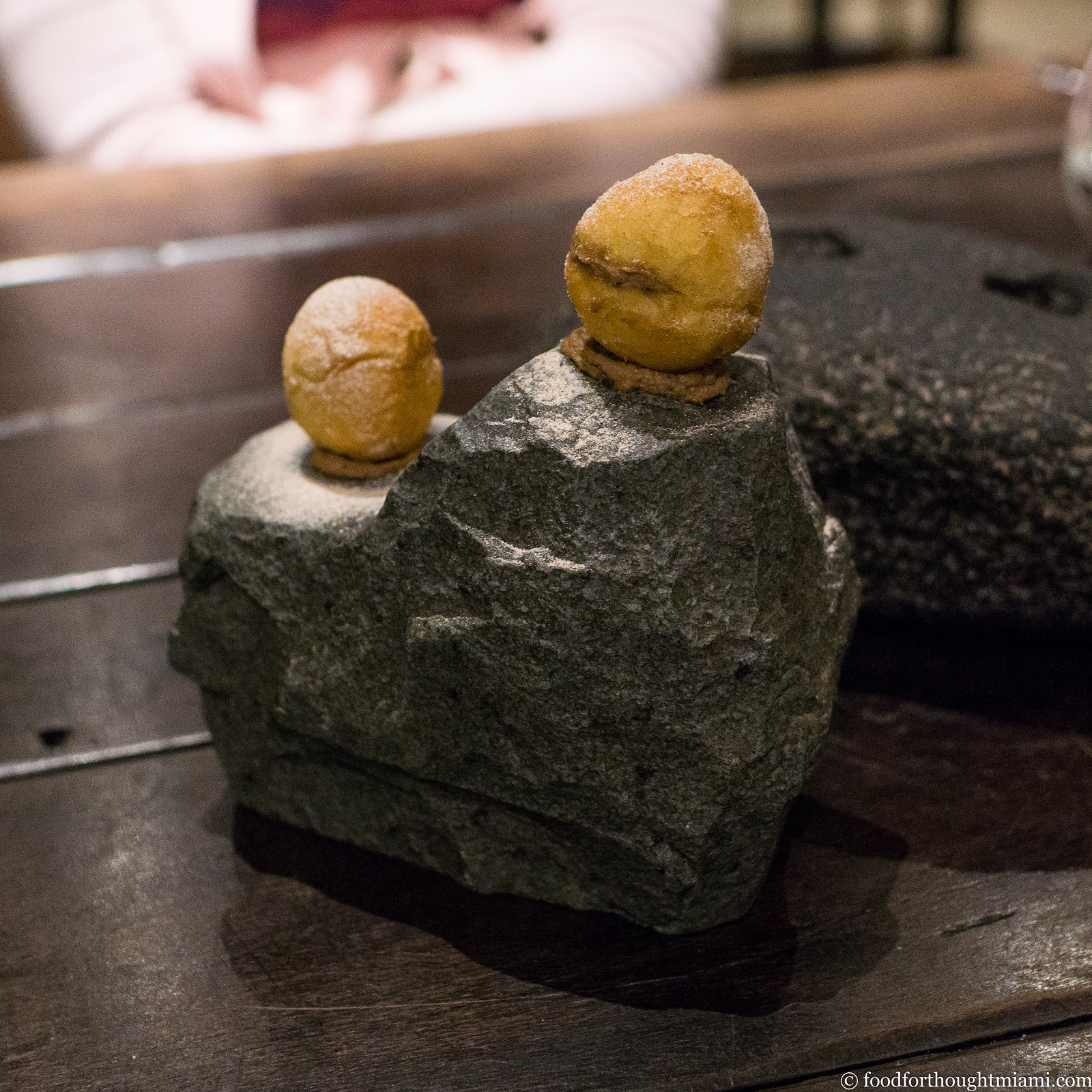 |
| cuchufli de mar |
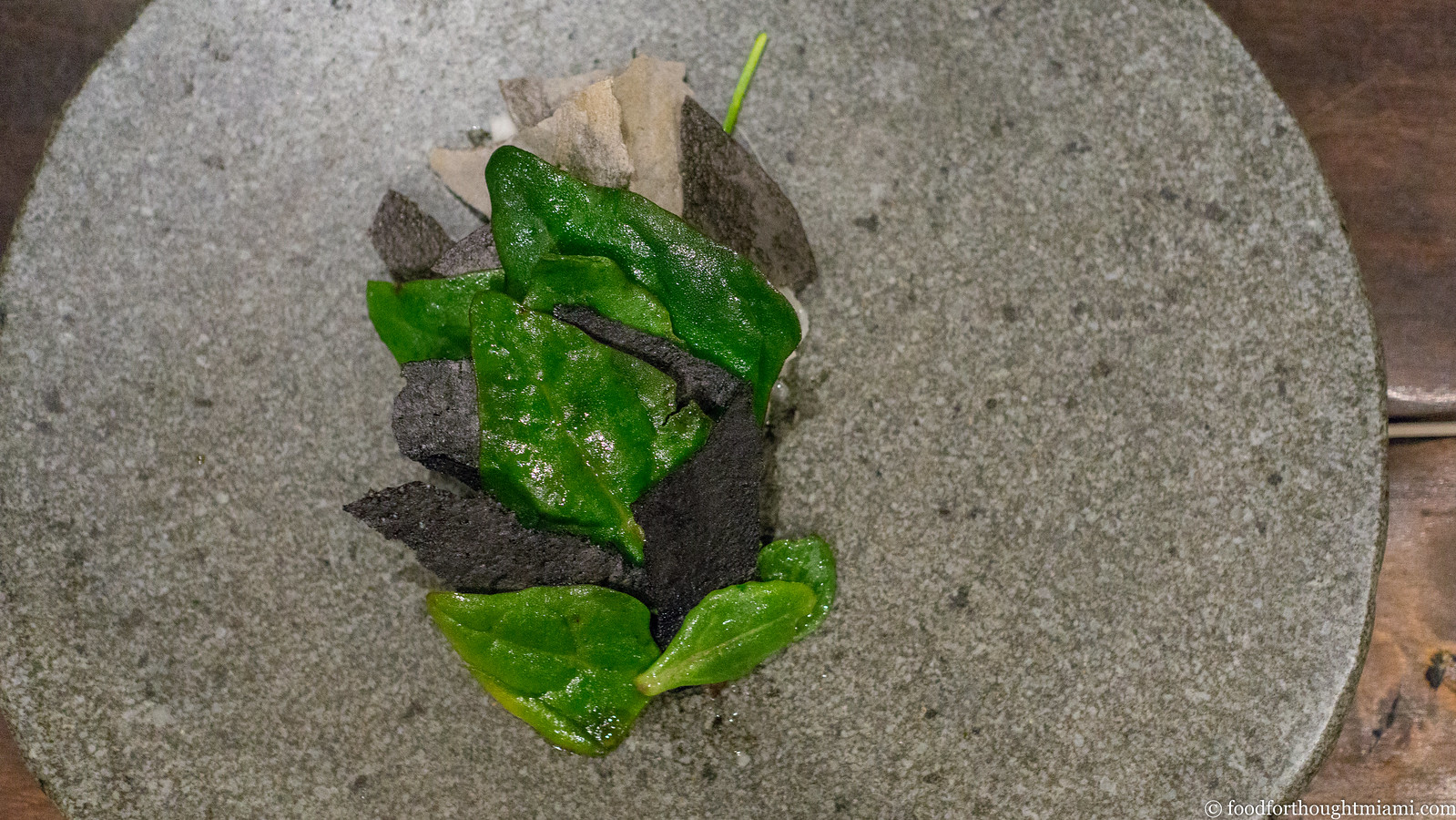 |
| capas de comida de roca en Punta de Traica |
 |
| pulmay de rocas |
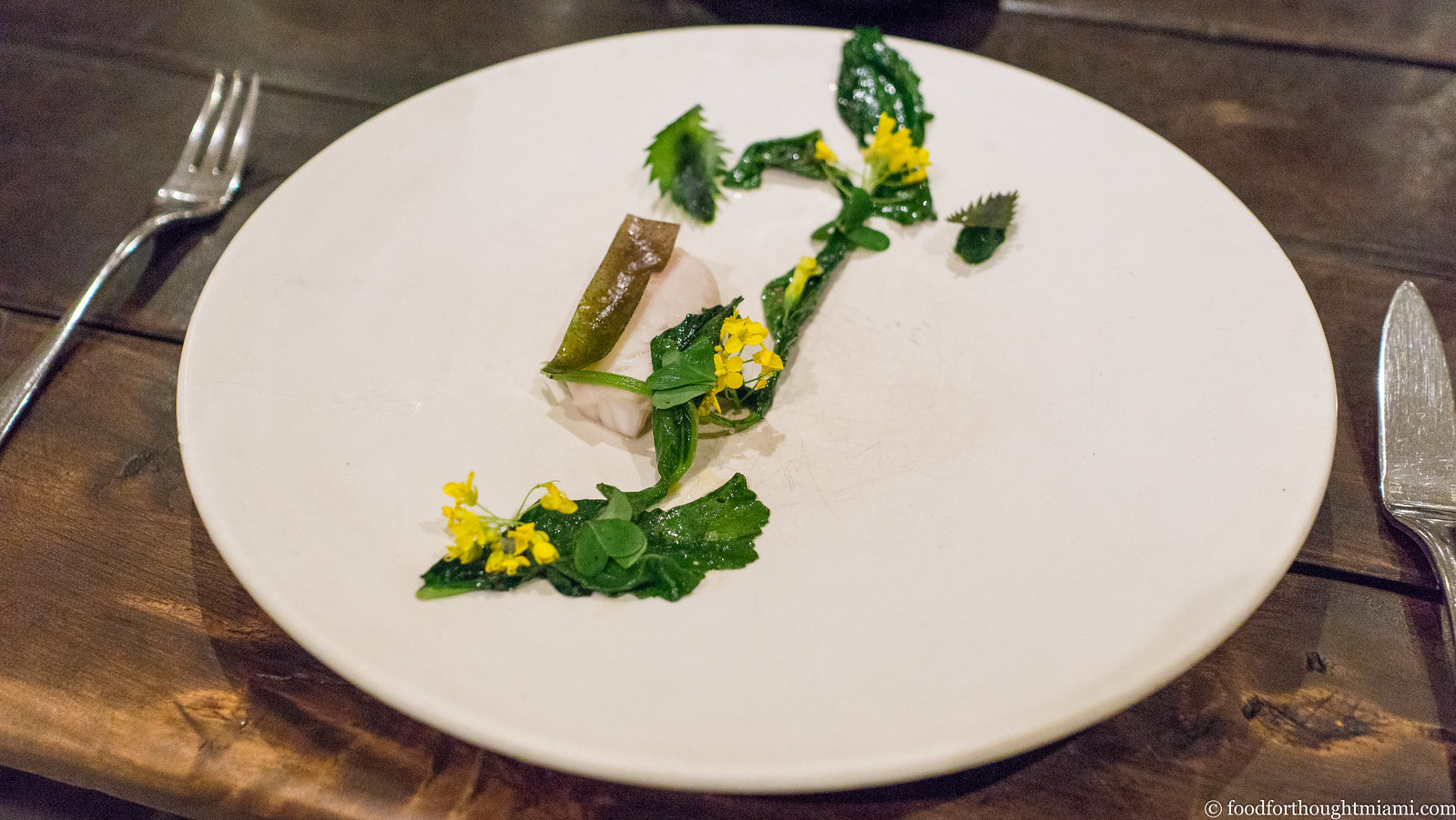 |
| pez de roca al vapor con algos, tallos silvestres de pre primavera |
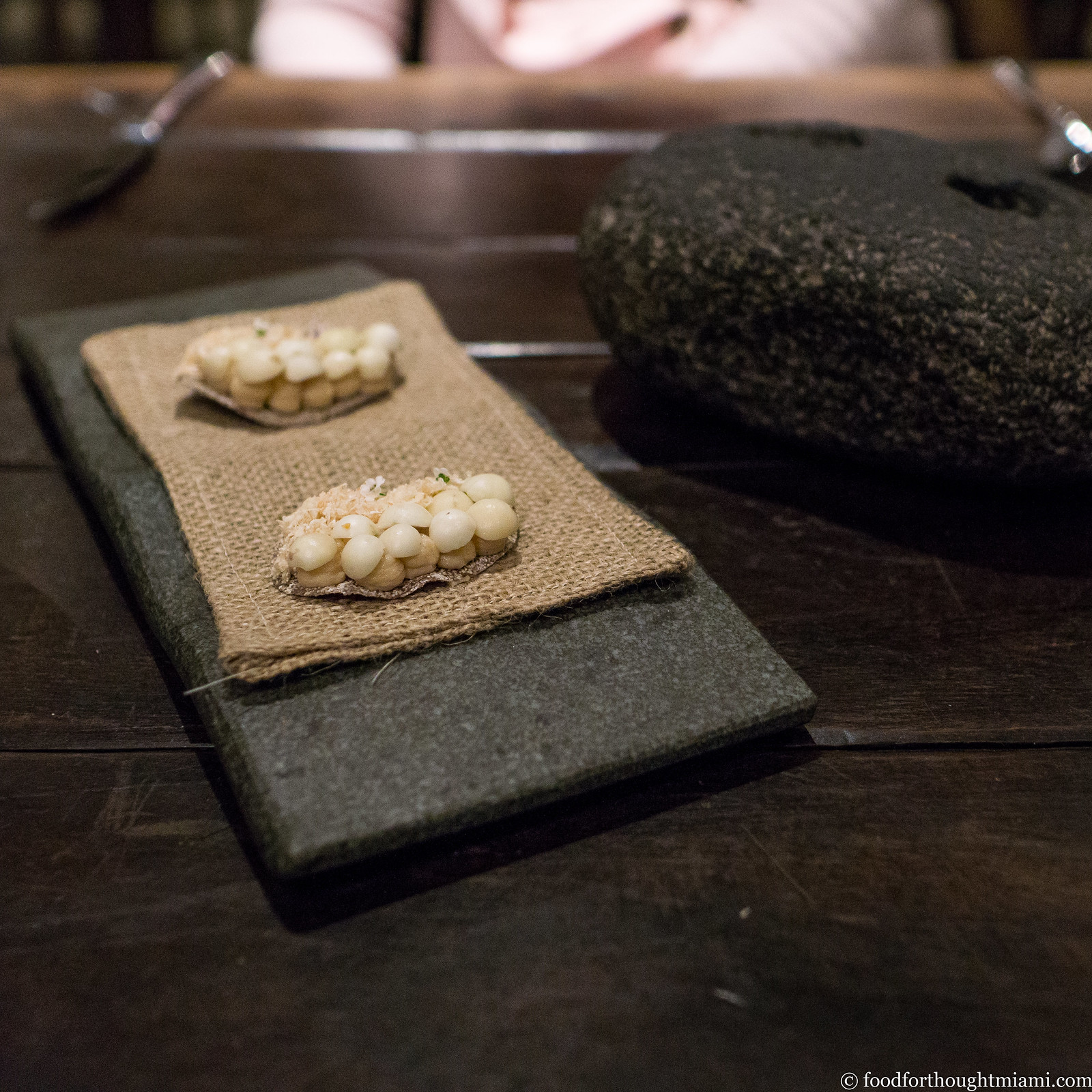 |
| crudo de piñones |
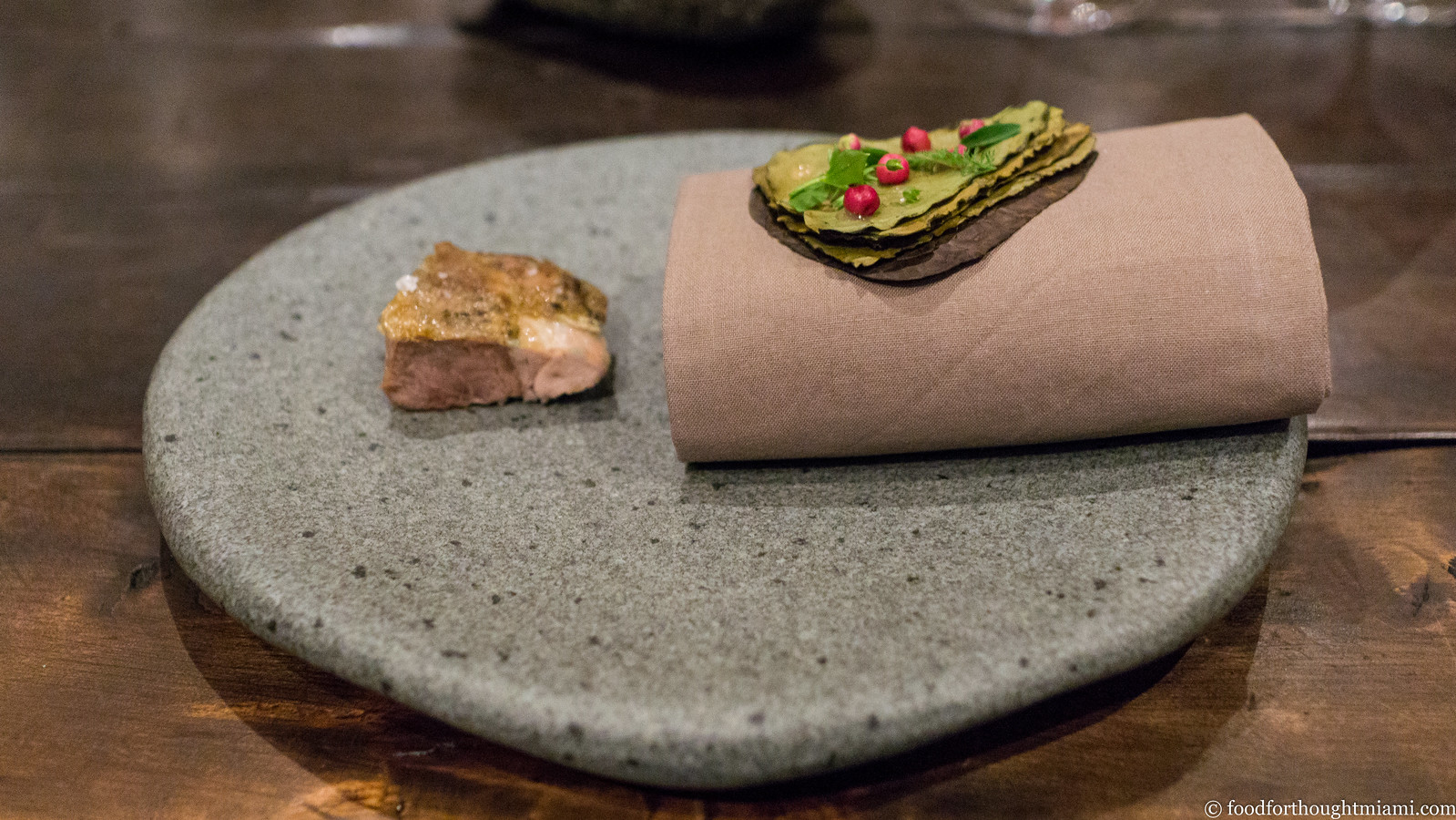 |
| cordero de Patagonia con milhojas de hojas de uva |
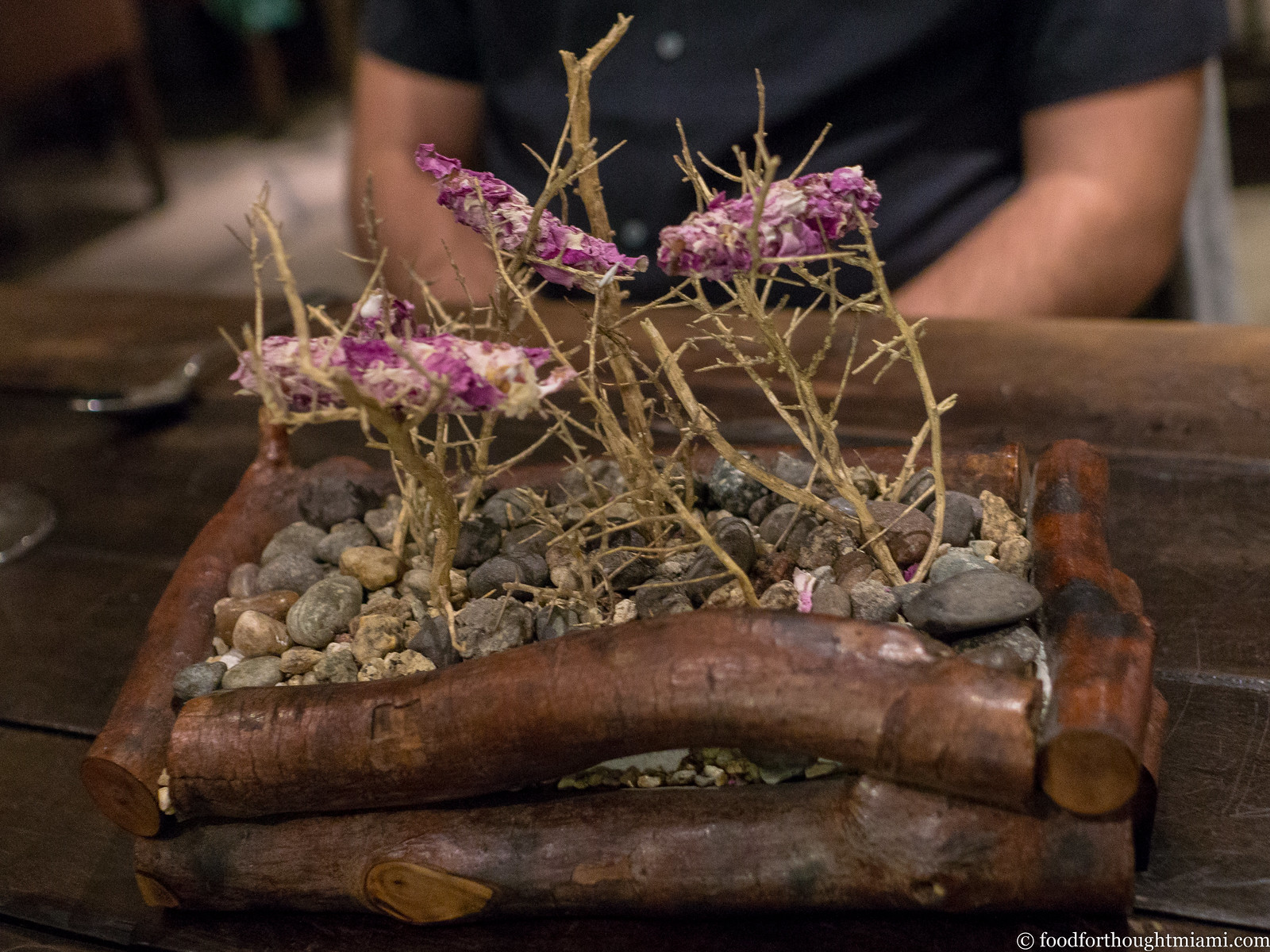 |
| cuchufli de rosa del año |
 |
| ensalada de rica rica |
We actually visited the Atacama desert just a couple days after our dinner at Boragó. While there, as we were returning from an excursion to the Puritama Hot Springs, our guide pulled the truck over and jumped out. She'd gotten a call from the kitchen requesting some rica rica, an herbaceous desert plant, and we were at the right elevation to gather some (you can see the bushes in the foreground of this picture, and the tiny leaves here). Rica rica, with its bright aroma, somewhere in the family of mint, sage, or eucalyptus, is used both as a flavoring agent (it brightens up a pisco sour) and for medicinal purposes (an infusion of its leaves is supposed to aid digestion and circulatory issues).[3] Here, it flavored a creamy ice cream paired with apples infused with oregano.
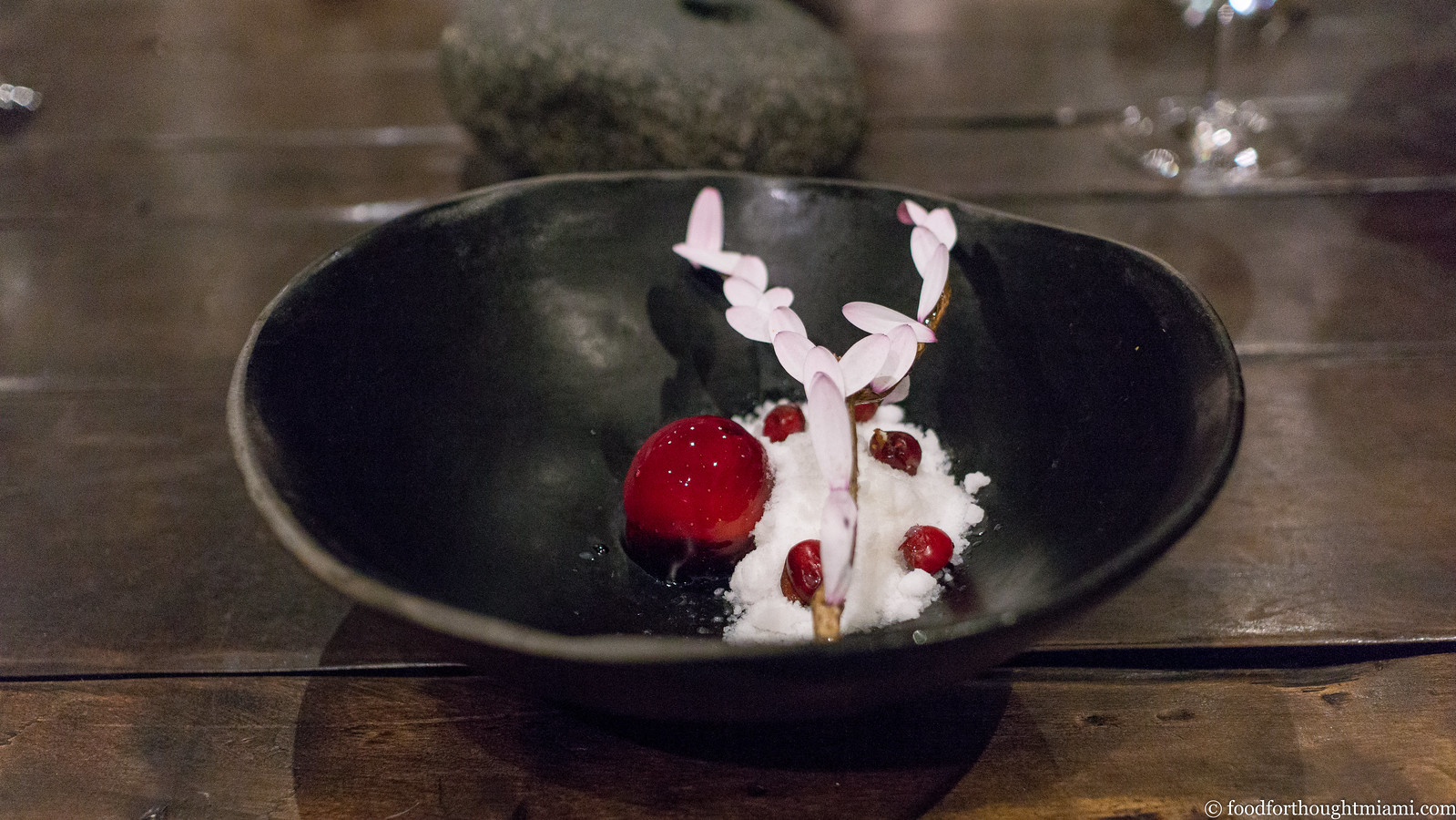 |
| tres leches: burra, cabra y vaca con peumos |
Next was an unorthodox version of "tres leches," typically a cloyingly sweet dessert using condensed milk, evaporated milk and heavy cream. Here, instead, the three milks were donkey, goat and cow, each used in a different form in combination with peumos (berries from a Chilean acorn tree) and beets, and decorated with a branch stuck with edible flower petals.
 |
| helado de hongos con espino |
The same mushrooms as were featured in the chupe at the start of the meal were used to flavor this ice cream for dessert, served in combination with a sweet, nutty paste of espino, made from the seed pods of an acacia tree. I've had candy cap mushroom ice creams before – we even saw it an ice cream shop in Fort Bragg up in northern California – and have enjoyed them all. This edged even a little closer to savory than those, but still had a delicious sweet forest floor complexity.
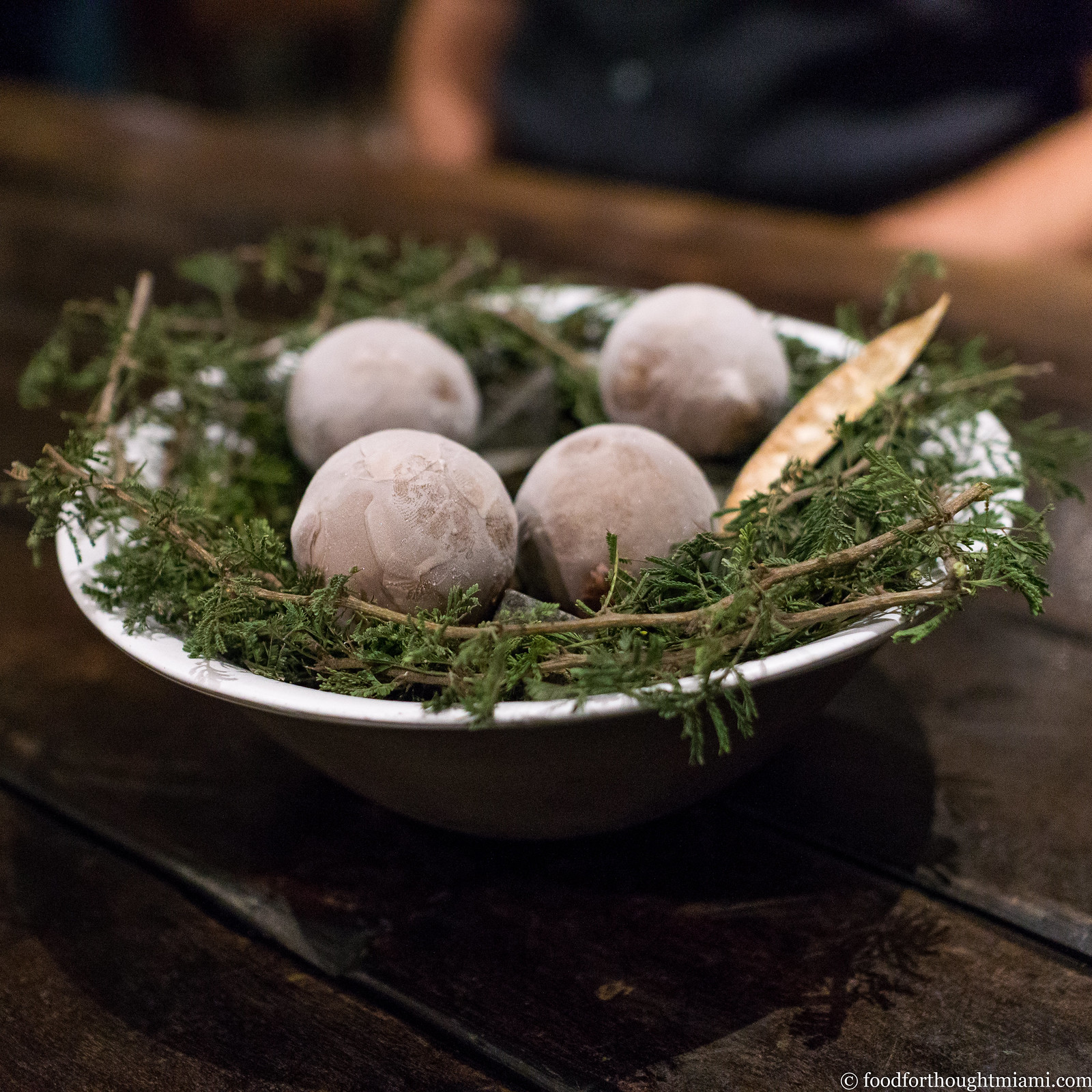 |
| coulant de espino |
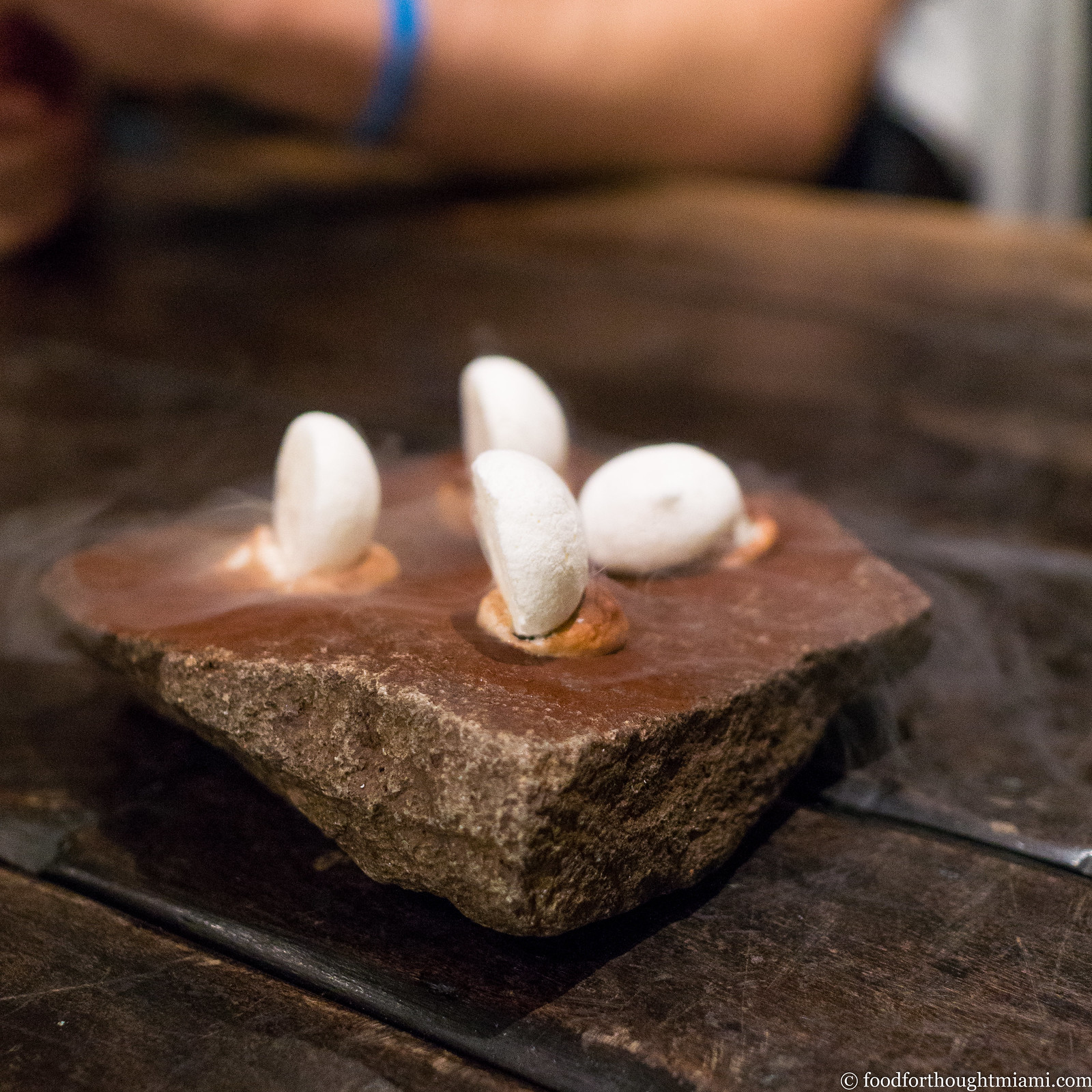 |
| frio glacial |
Espino was also used to flavor these coulants, their hard-shelled exterior giving way to molten interior. As a final bite, a dramatic after-dinner mint, frozen in liquid nitrogen to give a dragon's-breath effect.
(edited to add): Boragó offers both a wine pairing and a non-alcoholic beverage pairing, and between the four of us, we tried both (as well as a very nice pisco sour to start, made with mora berry juice, and a gin and tonic garnished with more of those Atacama rose petals). The wines, of course, were all Chilean, and notwithstanding my preconceptions about Chilean wines (as I mentioned earlier),[4] a couple were eye-openers for me. I was intrigued by a fresh, bright syrah / grenache /malbec blend from Viñedos de Alcohuaz, situated on the southern edge of the Atacama desert, which presses grapes by foot[5] and ferments in cement eggs for a year. I was entranced by the Ocio pinot noir from Cono Sur, which was elegant and sappy and balanced.
The non-alcoholic pairings were possibly even more interesting, ranging from an infusion of espino and algarrobo (carob?) served in a pipe like yerba mate, to a tangy, allium-infused ceviche juice, to a combination of black tea, mora juice and merken spice that echoed the complexity and balance of fruit and tannin that you find in wine, to a soft, almost creamy blend of strawberry juice infused with trigo (wheat).
Boragó operates as a crash course in the cuisine and culture of Chile. One of the challenges of that approach is that if you don't know much going in, it's like showing up for class without having read the materials first: a lot of it may go over your head. I cannot recall the last time I tasted, in one meal, so many things that were unfamiliar and new – used not just for novelty, but because they have a story to tell. The more I understood of the reference points this meal invoked, the more I appreciated it.
Boragó
Av. Nueva Costanera 3467, Vitacura, Santiago, Chile
+56 2 953 8893
[1] For further reading on Boragó's foraging program, I highly recommend this piece in Roads and Kingdoms by Nicholas Gill.Gill also wrote about the wild edibles of the Atacama Desert in the New Worlder, which was an all-around good resource on Chile.
[2] For further reading on the Atacama roses: "The Atacama desert is a glorious spectacle of gorgeous pink."
[3] According to our guide, anyway, the use of a doubled name like "rica rica" signifies the multiple uses of a plan. As another example, "pingo pingo" (a/k/a ephedra chilensis) is thought to aid respiratory issues, and also work as a libido enhancer.
[4] The short version, as I said earlier: perfectly drinkable, eminently forgettable. I have a theory: when it's too easy to make good wine, it's harder to make great wine. The Chilean wine regions seem to offer some near-ideal conditions for growing grapes, and produce perfectly fine, good wines; but most that I've had lack complexity. Meanwhile, many of the wines I really enjoy come from old vines, steep, mountainous vineyards, rocky soils. Maybe it's just romanticism on my part, but I believe that struggle builds character.
[5] For all I know, I was drinking wine which DocSconz's feet had pressed.



No comments:
Post a Comment